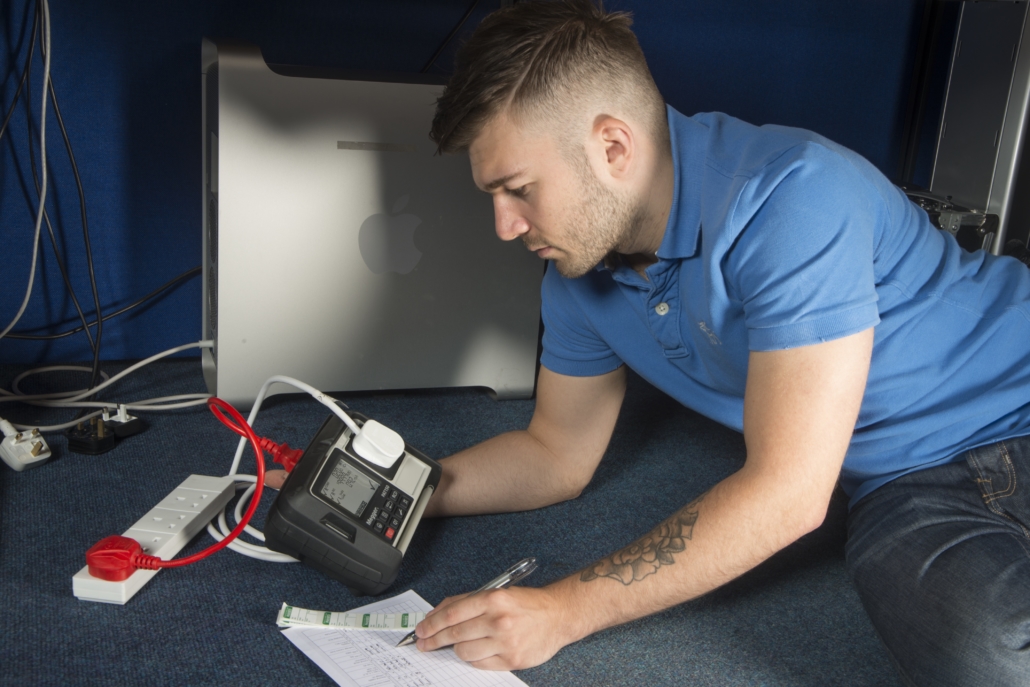In-house PAT testing: A cost-effective approach for schools

Portable Appliance Testing (PAT) is essential to maintaining a safe school environment. PAT testing is a regulatory requirement set out by the Health and Safety Executive (HSE) to ensure electrical appliances are safely maintained, helping prevent accidents. This article discusses the importance of PAT testing and explains how tests can be performed efficiently in-house.
Why is PAT Testing Important in Schools?
PAT testing plays a crucial role in maintaining a safe school environment. It’s an essential component of risk management and compliance, ensuring that all electrical appliances are safe for use. PAT testing in schools is important for many reasons, including:
- Student and staff safety: Schools house a multitude of electrical appliances that are used daily by both staff and students. These appliances range from kitchen equipment like kettles and microwaves in the staff room to computers, projectors, and other technology devices in the classrooms. Regular PAT testing helps ensure that these appliances are in a safe condition, significantly reducing the risk of electrical shocks or fire hazards.
- Regulatory compliance: According to the Health and Safety Executive (HSE), all organisations, including schools, are obligated to ensure that their electrical equipment is well-maintained. This typically involves conducting regular PAT testing. Failure to comply with these regulations can lead to penalties or other legal repercussions.
- Longevity of equipment: Regular PAT testing not only ensures safety but also helps to extend the life of electrical appliances. By identifying any potential faults early, timely repairs can be done, thereby extending the lifespan of the equipment and saving money.
- Peace of mind: Regular PAT testing provides peace of mind to all stakeholders – staff, parents, and even the students. Knowing that the school environment is safe and that all electrical appliances are regularly checked and maintained is important for all concerned.
Who Can Conduct PAT Testing?
A common misconception is that PAT testing is complicated, challenging to perform, and has to be carried out by specialists. In reality, PAT testing is a straightforward task, and the HSE only requires the person carrying out the test to be ‘competent’. This means that the person must have the skills, knowledge, and experience to perform the tests safely and correctly interpret the results.
In many cases, members of the school staff, such as a maintenance or facilities person or even a teaching staff member, could meet the requirements for performing PAT tests. This is important to know because by conducting PAT testing in-house, schools can have more control over when and how the tests are carried out and can save money. In summary, specialist PAT testers can provide excellent service, but there is no obligation to use them.
Equipment for PAT Testing
To carry out PAT testing reliably, it is essential to use appropriate equipment. A wide selection of PAT testers is available, ranging from basic models that conduct only necessary tests on the types of assets most likely to be encountered to more advanced testers that offer additional features.
Basic PAT testers, such as those in Megger’s PAT100 range, are typically designed to be user-friendly while conducting all of the fundamental tests required by the Health and Safety Executive (HSE). These testers are easy to operate and are suitable for establishments with a modest number of appliances. Despite being entry-level tools, the only limitations of these testers are that they may not be suitable for testing some specialised assets, and they lack refinements, such as automatic recording of results, which are big time savers when testing a large number of assets.
More advanced testers like Megger’s PAT400 series are likely to be more appropriate for larger institutions with hundreds of appliances. While being almost as easy to use as the basic models, these offer more test options and have been designed to handle high volumes of tests efficiently and conveniently. Advanced features include data storage for up to 10,000 test results, which makes tracking and record-keeping more manageable. Customisable pass/fail limits allow for flexibility based on the school’s specific policies or equipment types, and a high-duty cycle capability ensures that the tester can handle repetitive testing without performance degradation.
Some advanced PAT testers, including those in Megger’s PAT400 series, can be paired with additional accessories like barcode scanners and printers to streamline the PAT testing process further. Using barcodes can significantly speed up the testing process by eliminating the need for manual data entry. With a simple scan, the appliance information is recorded, making this a real time-saver when testing a large number of items.
In many cases, advanced PAT testers also come with supporting software that allows for seamless test data transfer from the tester to a computer. This software can be used to organise, analyse, and report the results of the tests, making it much easier to maintain an accurate and up-to-date record of appliance safety in the school.
Effective PAT testing also requires a solid understanding of how to use the equipment and interpret the results. Many manufacturers provide comprehensive user manuals, tutorial videos, and even online or in-person training sessions. These resources can equip the testing personnel with the necessary knowledge and skills to conduct PAT testing accurately and efficiently.
The right PAT testing tools can significantly affect the efficiency and effectiveness of a school’s electrical safety testing program. By choosing a test instrument that aligns with the institution’s needs and ensuring that the staff who use it receive appropriate training, schools can provide both the safety of their electrical appliances and compliance with HSE regulations.
In conclusion, PAT testing is critical in maintaining a safe school environment. It helps prevent accidents, ensuring that all electrical appliances in the facility are safe for use. With the right equipment and know-how, schools can conduct PAT tests in-house, saving money and allowing more flexibility in scheduling the tests, thereby improving the overall safety and efficiency of the institution.

